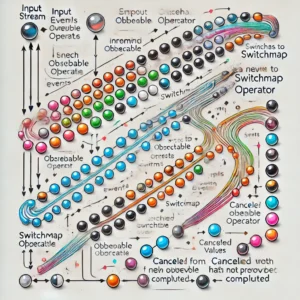When it comes to software development, testing is a crucial process that ensures the quality and reliability of the final product. There are different types of software testing strategies that developers use to identify and fix issues in their code. In this article, I will discuss three of the most commonly used testing strategies: unit testing, integration testing, and end-to-end testing.
Unit testing is a testing strategy that involves testing individual components or modules of the software. It is typically performed by developers and involves writing code to test each unit of code in isolation. Integration testing, on the other hand, is a strategy that involves testing how different modules or components of the software work together. This type of testing helps identify any issues that arise when different units of code are combined.
Finally, end-to-end testing is a strategy that tests the entire software application from start to finish. This type of testing is typically performed by quality assurance (QA) engineers and helps ensure that the software meets all of the requirements and functions as intended. By using a combination of these testing strategies, developers can ensure that their software is reliable, efficient, and meets the needs of their users.
Understanding Software Testing Strategies
As a software developer, I understand the importance of testing software before it is released to the public. Software testing is a critical part of the software development cycle, and it ensures that the software meets the requirements and specifications of the client.
There are several software testing strategies, including unit testing, integration testing, and end-to-end testing. Each of these strategies has its own unique benefits and drawbacks, and it is essential to understand them to determine which one is best for your project.
Unit Testing
Unit testing is a type of software testing that focuses on testing individual units or components of the software. The purpose of unit testing is to validate that each unit of the software works as intended and meets the requirements. Unit testing is usually performed by developers and is an essential part of the development process.
Unit testing involves creating test cases for each unit of code and running them to ensure that the code is working correctly. Developers use various tools and frameworks to automate the unit testing process, which saves time and ensures that the testing is consistent.
Integration Testing
Integration testing is a software testing technique that focuses on verifying the interactions and data exchange between different components or modules of a software application. The goal of integration testing is to identify any problems or bugs that arise when different components are combined and interact with each other.
Integration testing is usually performed after unit testing and before system testing. It aims to find interfacing issues between the modules and ensures that the individual units can be integrated into a subsystem correctly. Integration testing can be performed using various methods such as Big-bang, top-down, bottom-up, and Hybrid.
End-to-End Testing
End-to-end testing is a type of software testing that tests the entire system from start to finish. It involves testing the software in a real-world environment and ensures that all the components of the software work together correctly. End-to-end testing is usually performed by a dedicated testing team and is the final stage of the testing process.
End-to-end testing involves creating test cases that mimic real-world scenarios and running them to ensure that the software works as intended. It is a time-consuming process, but it is necessary to ensure that the software meets the requirements and specifications of the client.
In conclusion, understanding the different software testing strategies is crucial to ensure that the software meets the requirements and specifications of the client. Unit testing, integration testing, and end-to-end testing are essential parts of the software development process, and each strategy has its own unique benefits and drawbacks.
Unit Testing
Unit testing is a software testing technique that involves testing individual units or components of a software application in isolation from the rest of the system. The purpose of unit testing is to verify whether each unit of code is working as intended and meets the specified requirements. In this section, I will discuss the basics of unit testing, mocking and stubbing for isolating units, test-driven development (TDD) as a methodology, benefits of unit testing, and challenges in unit testing.
Basics of Unit Testing
Unit testing involves writing test cases for each unit of code to be tested. A unit of code can be a function, method, or class. The test cases are written to verify whether the unit of code behaves as expected and meets the specified requirements. Unit tests are usually automated and run frequently during the development process to catch bugs early.
Mocking and Stubbing for Isolating Units
Mocking and stubbing are techniques used to isolate units of code during unit testing. Mocking involves creating a fake object that mimics the behavior of a real object. Stubbing involves replacing a real object with a simpler version that returns pre-defined responses. These techniques are used to eliminate dependencies on external systems and isolate the unit of code being tested.
Test-driven Development (TDD) as a Methodology
Test-driven development (TDD) is a software development methodology that emphasizes writing unit tests before writing the actual code. The idea behind TDD is to ensure that the code meets the specified requirements and is testable. TDD helps to catch bugs early in the development process and ensures that the code is modular and maintainable.
Benefits of Unit Testing
Unit testing has several benefits, including:
- Catching bugs early in the development process
- Improving code quality and maintainability
- Reducing the cost of fixing bugs
- Providing documentation for the code
- Encouraging modular design and code reuse
Challenges in Unit Testing
Unit testing also has some challenges, including:
- Writing effective test cases can be time-consuming
- Testing complex systems can be difficult
- Maintaining test cases can be challenging
- Unit tests may not catch all bugs, especially integration issues
In conclusion, unit testing is an essential technique in software testing that helps to catch bugs early in the development process and improve code quality and maintainability. It involves writing test cases for each unit of code to be tested, isolating units of code using mocking and stubbing, and using test-driven development (TDD) as a methodology. While unit testing has several benefits, it also has some challenges that must be addressed.
Integration Testing
Integration testing is a software testing technique that involves testing the interaction between different modules or components of a software system. The goal of integration testing is to identify defects in the interfaces and interactions between different modules and ensure that they work together as expected.
Understanding Integration Testing
Integration testing is performed after unit testing and before system testing. It is a critical step in the software testing process, as it helps to identify and resolve issues that may arise when different modules are integrated. Integration testing can be performed manually or using automated tools.
Types of Integration Testing
There are several types of integration testing, including:
- Big Bang Integration Testing: This involves integrating all the modules of a software system at once and testing them as a whole.
- Top-down Integration Testing: This involves testing the higher-level modules first and then gradually integrating the lower-level modules.
- Bottom-up Integration Testing: This involves testing the lower-level modules first and then gradually integrating the higher-level modules.
- Sandwich Integration Testing: This involves combining the top-down and bottom-up integration testing approaches.
Benefits and Challenges of Integration Testing
Integration testing has several benefits, including:
- It helps to identify defects early in the software development process.
- It ensures that different modules of a software system work together as expected.
- It helps to reduce the overall cost of software development by identifying and resolving defects early.
However, integration testing also has some challenges, including:
- It can be time-consuming and expensive.
- It can be difficult to simulate all possible interactions between different modules.
- It can be challenging to identify and resolve defects that arise due to complex interactions between different modules.
Overall, integration testing is a critical step in the software testing process that helps to ensure that different modules of a software system work together as expected.
End-to-End Testing
End-to-End (E2E) testing is a software testing strategy that verifies the software’s functionality from start to finish. It involves testing the entire system, including all its components, to ensure that it works as expected. In this section, I will discuss the concept of E2E testing, its importance, and the challenges associated with it.
Concept of End-to-End Testing
The concept of E2E testing is to simulate real-world scenarios and test the software’s behavior from the user’s perspective. It involves testing the software as a whole, rather than individual components, to ensure that it meets the user’s requirements. E2E testing is typically performed using automation tools that simulate user actions, such as clicking buttons, entering data, and navigating through the software.
Importance of End-to-End Testing
E2E testing is an essential part of the software development process because it helps to identify defects that may not be found during unit or integration testing. It ensures that the software works as intended and meets the user’s requirements. E2E testing also helps to improve the software’s quality and reliability, which can lead to increased user satisfaction and reduced maintenance costs.
Challenges in End-to-End Testing
E2E testing can be challenging because it requires a significant amount of time and resources to develop and maintain test cases. It can also be difficult to simulate all possible scenarios that users may encounter, making it challenging to identify all defects. Additionally, E2E testing can be impacted by external factors, such as network connectivity and system performance, which can affect the software’s behavior.
In conclusion, E2E testing is a critical component of the software development process that helps to ensure that the software meets the user’s requirements and works as intended. While it can be challenging, it is essential to invest the time and resources needed to perform E2E testing to improve the software’s quality and reliability.
Visual Regression Testing
Visual regression testing is a type of testing that is focused on ensuring the visual consistency of an application across different releases. It is a subset of end-to-end testing and is used to detect any changes in the visual appearance of the application that may have been introduced during the development process.
Visual Regression Testing within End-to-End Testing
Visual regression testing is an important part of end-to-end testing because it helps to ensure that the application looks the same across different environments and devices. This is particularly important for applications that are used by a large number of users, as even minor visual changes can have a significant impact on user experience.
Ensuring the Visual Consistency of the Application Across Releases
Visual regression testing involves comparing screenshots of the application taken during different releases to identify any visual differences. This can be a time-consuming process, but it is essential for ensuring the visual consistency of the application.
To make visual regression testing more efficient, it is important to define a baseline for the application’s visual appearance. This can be done by taking screenshots of the application during a stable release and using them as a reference for future releases. Any changes in the visual appearance of the application can then be compared to the baseline screenshots to identify any visual regressions.
Tools for Visual Regression Testing
There are several tools available for visual regression testing, including Applitools, BackstopJS, and Percy. These tools automate the process of capturing screenshots and comparing them to identify any visual differences.
In addition to these tools, it is also important to have a well-defined testing process that includes clear guidelines for visual regression testing. This can help to ensure that the testing process is consistent and efficient, and that any visual regressions are identified and addressed in a timely manner.
Overall, visual regression testing is an important part of the testing process for any application that relies on visual appearance. By ensuring the visual consistency of the application across different releases, it helps to improve user experience and maintain the quality of the application.
Choosing the Right Testing Strategy
As a software developer, I understand the importance of choosing the right testing strategy for my project. Different testing strategies have their own advantages and disadvantages, and selecting the right one can be critical to the success of the project. In this section, I will discuss some factors that influence the selection of testing strategies, and how to balance the trade-offs between different testing levels.
Factors influencing the selection of testing strategies
When selecting a testing strategy, there are several factors to consider. These factors include:
- Project requirements: The testing strategy should align with the project requirements. For example, if the project requires a high level of accuracy and reliability, then end-to-end testing may be the best option.
- Budget and resources: The testing strategy should be feasible within the project budget and available resources. For example, if the project has a limited budget, then unit testing may be the best option.
- Time constraints: The testing strategy should be completed within the project timeline. For example, if the project has a tight deadline, then unit testing may be the best option.
Balancing the trade-offs between different testing levels
Different testing levels have their own trade-offs. For example, unit testing is fast and easy to implement, but it may not catch all the bugs in the system. On the other hand, end-to-end testing is comprehensive, but it can be time-consuming and expensive. It is important to balance the trade-offs between different testing levels to select the right testing strategy.
Tailoring testing approaches based on project requirements and timelines
The testing strategy should be tailored to meet the project requirements and timelines. For example, if the project has a tight deadline and limited resources, then a combination of unit testing and integration testing may be the best option. On the other hand, if the project requires a high level of accuracy and reliability, then a combination of integration testing and end-to-end testing may be the best option.
In conclusion, selecting the right testing strategy is critical to the success of a project. It is important to consider the project requirements, budget, resources, and timelines when selecting a testing strategy. Balancing the trade-offs between different testing levels and tailoring testing approaches based on project requirements and timelines can help select the right testing strategy.
Comparative Analysis of Testing Strategies
When it comes to software testing, there are various strategies that can be employed. In this section, I will provide a comparative analysis of the three most common testing strategies: Unit Testing, Integration Testing, and End-to-End Testing.
Unit Testing
Unit testing is a software testing method where individual components or modules of software are tested in isolation. The primary objective is to validate that each unit of the software performs as designed. Unit testing is usually done by the developers themselves and is done in the early stages of development.
Advantages of Unit Testing:
- Isolation: By testing each component separately, it becomes easier to pinpoint defects or issues.
- Early Detection: Unit testing helps in detecting issues early in the development cycle, which saves time and cost.
- Better Code Quality: Unit testing forces developers to write better, more modular code.
Disadvantages of Unit Testing:
- Limited Scope: Unit testing only tests individual components, not the system as a whole.
- Time-Consuming: Writing unit tests can be time-consuming, especially for large projects.
Integration Testing
Integration testing is a testing strategy that tests the interactions between different components of the system. The objective is to ensure that the components work together as expected. Integration testing is usually done after unit testing and before system testing.
Advantages of Integration Testing:
- Comprehensive Testing: Integration testing tests the interactions between different components, ensuring that the system works as a whole.
- Early Detection: Integration testing helps in detecting issues early in the development cycle, which saves time and cost.
- Better Code Quality: Integration testing forces developers to write better, more modular code.
Disadvantages of Integration Testing:
- Time-Consuming: Integration testing can be time-consuming, especially for large projects.
- Complex: Integration testing can be complex, especially for systems with many components.
End-to-End Testing
End-to-End testing is a testing strategy that tests the entire system from start to finish. The objective is to ensure that the system works as expected in a real-world scenario. End-to-End testing is usually done after integration testing and before release.
Advantages of End-to-End Testing:
- Comprehensive Testing: End-to-End testing tests the entire system, ensuring that it works as expected in a real-world scenario.
- Realistic Testing: End-to-End testing provides a realistic view of the system’s performance and behavior.
- Customer Satisfaction: End-to-End testing ensures that the system meets the customer’s expectations.
Disadvantages of End-to-End Testing:
- Time-Consuming: End-to-End testing can be time-consuming, especially for large projects.
- Expensive: End-to-End testing can be expensive, especially for systems with many components.
- Complex: End-to-End testing can be complex, especially for systems with many components.
In conclusion, each testing strategy has its own advantages and disadvantages. The choice of testing strategy depends on the specific needs of the project and the resources available.
Best Practices in Software Testing Strategies
As a software tester, I have found that following best practices in software testing strategies can help ensure that the testing process is efficient and effective. Here are a few best practices that I recommend:
1. Understand the Requirements
Before starting any testing, it is important to have a clear understanding of the requirements of the software being tested. This will help ensure that the testing is focused on the right areas and that the software meets the necessary specifications.
2. Use a Combination of Testing Strategies
Different testing strategies have their own strengths and weaknesses. To ensure that all aspects of the software are properly tested, it is important to use a combination of testing strategies. Unit testing, integration testing, and end-to-end testing are three common testing strategies that can be used in combination to provide comprehensive coverage.
3. Test Early and Often
Testing early and often can help catch issues before they become more difficult and costly to fix. It is important to start testing as soon as possible in the development process and to continue testing throughout the development cycle.
4. Use Automation Where Possible
Automating tests can help save time and reduce the risk of human error. However, it is important to ensure that automated tests are properly designed and maintained to avoid false positives and false negatives.
5. Document Test Cases and Results
Documenting test cases and results can help ensure that all aspects of the software have been properly tested and that any issues are properly tracked and resolved. It is important to maintain clear and organized documentation throughout the testing process.
By following these best practices, software testers can help ensure that the testing process is efficient, effective, and thorough.
Conclusion
In conclusion, software testing is an essential part of the software development life cycle. It helps to ensure that the software functions as intended and meets the requirements of the end-users.
Unit testing is the first level of testing that focuses on testing the smallest units of code in isolation. It helps to catch defects early in the development process and ensures that each unit of code functions correctly.
Integration testing comes after unit testing and focuses on testing the interactions between different units of code. It helps to ensure that the integrated system functions correctly and that all the units of code work together seamlessly.
End-to-end testing is the final level of testing and focuses on testing the entire system from the user’s perspective. It helps to ensure that the software functions as intended and that the end-users can use it without any issues.
Each testing level has its own benefits and drawbacks. Therefore, it is crucial to use a combination of testing strategies to ensure that the software is thoroughly tested and meets the requirements of the end-users.
By using a combination of unit testing, integration testing, and end-to-end testing, developers can ensure that the software is of high quality, reliable, and meets the needs of the end-users.
Additional Resources
- “Test-Driven Development (TDD) by Kent Beck”
- URL: https://www.amazon.com/Test-Driven-Development-Kent-Beck/dp/0321146530
- Description: Kent Beck’s classic book on Test-Driven Development is a foundational resource for understanding the principles and practices of TDD.
- “Postman Documentation”
- URL: https://learning.postman.com/docs/getting-started/introduction/
- Description: Explore the official documentation for Postman, a popular tool for API development and testing, to learn how to perform effective Integration Testing.
- “Cypress Documentation”
- URL: https://docs.cypress.io/guides/getting-started/introduction
- Description: The official documentation for Cypress provides in-depth guidance on setting up and executing End-to-End Testing for web applications.
- “Selenium Documentation”
- URL: https://www.selenium.dev/documentation/en/
- Description: Selenium is a powerful tool for automating browser interactions. Explore the documentation to understand how to implement effective End-to-End Testing for web applications.
- “Jest Documentation”
- URL: https://jestjs.io/docs/en/getting-started
- Description: Jest is a widely used testing framework for JavaScript. The documentation provides comprehensive information on setting up and performing Unit Testing using Jest.
- “Continuous Integration and Continuous Testing with Jenkins”
- URL: https://www.jenkins.io/doc/
- Description: Jenkins is a popular automation server. Explore the documentation to learn how to integrate testing into your continuous integration pipeline.
- “Visual Regression Testing with Applitools”
- URL: https://applitools.com/docs
- Description: Applitools is a visual testing and monitoring platform. The documentation guides users on implementing Visual Regression Testing to ensure consistent visual appearances across releases.
- “Software Testing Help”
- URL: https://www.softwaretestinghelp.com/
- Description: Software Testing Help is a comprehensive online resource with articles, tutorials, and guides covering various aspects of software testing, including different testing strategies.
These resources cover a range of topics, from foundational principles to practical implementation, providing readers with a diverse set of materials to enhance their understanding of software testing strategies.






